Model for utilizing distance learning post COVID-19 using (PACT)™ a cross sectional qualitative study
- PMID: 33138818
- PMCID: PMC7605338
- DOI: 10.1186/s12909-020-02311-1
Model for utilizing distance learning post COVID-19 using (PACT)™ a cross sectional qualitative study
Abstract
Background: COVID - 19 pandemic pressured medical schools globally to shift to Distance learning (DL) as an alternative way to ensure that the content delivered is satisfactory for student progression.
Aim of the work: This work aims at mapping priorities for post-COVID planning for better balance between distance learning and face to face learning.
Methods: This qualitative study aimed to develop a model for utilizing DL using The Polarity Approach for Continuity and Transformation (PACT)™. A virtual mapping session was held with 79 faculty from 19 countries. They worked in small groups to determine upsides and downsides of face-to-face and DL subsequently. An initial polarity map was generated identifying five tension areas; Faculty, Students, Curriculum, Social aspects and Logistics. A 63-item assessment tool was generated based on this map, piloted and then distributed as a self-administered assessment. The outcomes of this assessment were utilized for another mapping session to discuss warning signs and action steps to maintain upsides and avoid downsides of each pole.
Results: Participants agreed that face-to-face teaching allows them to inspire students and have meaningful connections with them. They also agreed that DL provides a good environment for most students. However, students with financial challenges and special needs may not have equal opportunities to access technology. As regards social issues, participants agreed that face-to-face learning provides a better chance for professionalism through enhanced team-work. Cognitive, communication and clinical skills are best achieved in face-to-face. Participants agreed that logistics for conducting DL are much more complicated when compared to face-to-face learning. Participants identified around 10 warning signs for each method that need to be continuously monitored in order to minimize the drawbacks of over focusing on one pole at the expense of the other. Action steps were determined to ensure optimized use of in either method.
Conclusion: In order to plan for the future, we need to understand the dynamics of education within the context of polarities. Educators need to understand that the choice of DL, although was imposed as a no-alternative solution during the COVID era, yet it has always existed as a possible alternative and will continue to exist after this era. The value of polarity mapping and leveraging allows us to maximize the benefit of each method and guide educators' decisions to minimize the downsides for the good of the learning process.
Keywords: COVID; Distance learning; Planning; Polarity mapping.
Conflict of interest statement
None declared.
Figures

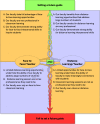
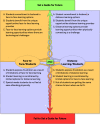
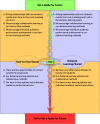
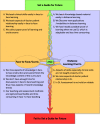
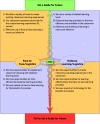

Similar articles
-
Polarity Based Model for Guiding Medical School Strategy During Crisis - A Cross Sectional Qualitative Study.Adv Med Educ Pract. 2022 Jan 11;13:11-25. doi: 10.2147/AMEP.S337127. eCollection 2022. Adv Med Educ Pract. 2022. PMID: 35046744 Free PMC article.
-
The sudden transition to synchronized online learning during the COVID-19 pandemic in Saudi Arabia: a qualitative study exploring medical students' perspectives.BMC Med Educ. 2020 Aug 28;20(1):285. doi: 10.1186/s12909-020-02208-z. BMC Med Educ. 2020. PMID: 32859188 Free PMC article.
-
Évaluation d'un dispositif de continuité pédagogique à distance mis en place auprès d'étudiants MERM pendant le confinement sanitaire lié au COVID-19.J Med Imaging Radiat Sci. 2020 Dec;51(4):645-653. doi: 10.1016/j.jmir.2020.08.020. Epub 2020 Sep 8. J Med Imaging Radiat Sci. 2020. PMID: 32988797 Free PMC article.
-
How We Do It: Modified Residency Programming and Adoption of Remote Didactic Curriculum During the COVID-19 Pandemic.J Surg Educ. 2020 Sep-Oct;77(5):1033-1036. doi: 10.1016/j.jsurg.2020.05.026. Epub 2020 May 28. J Surg Educ. 2020. PMID: 32546387 Free PMC article. Review.
-
Application of Universal Design for Learning (UDL) Principles to Surgical Education During the COVID-19 Pandemic.J Surg Educ. 2020 Sep-Oct;77(5):1008-1012. doi: 10.1016/j.jsurg.2020.06.005. Epub 2020 Jun 5. J Surg Educ. 2020. PMID: 32576451 Free PMC article. Review.
Cited by
-
Impact of artificial intelligence on human loss in decision making, laziness and safety in education.Humanit Soc Sci Commun. 2023;10(1):311. doi: 10.1057/s41599-023-01787-8. Epub 2023 Jun 9. Humanit Soc Sci Commun. 2023. PMID: 37325188 Free PMC article.
-
Online, Face-to-Face, or Blended Learning? Faculty and Medical Students' Perceptions During the COVID-19 Pandemic: A Mixed-Method Study.Front Med (Lausanne). 2022 Feb 3;9:791352. doi: 10.3389/fmed.2022.791352. eCollection 2022. Front Med (Lausanne). 2022. PMID: 35186989 Free PMC article.
-
PBL teaching in ultrasonography resident standardization training in the COVID-19 pandemic.BMC Med Educ. 2022 Jun 30;22(1):512. doi: 10.1186/s12909-022-03555-9. BMC Med Educ. 2022. PMID: 35773709 Free PMC article.
-
Enhancing Professionalism Online (Netiquette) in Medical Schools: A Systematic Scoping Review.J Med Educ Curric Dev. 2025 Feb 24;12:23821205241255268. doi: 10.1177/23821205241255268. eCollection 2025 Jan-Dec. J Med Educ Curric Dev. 2025. PMID: 40008119 Free PMC article. Review.
-
A guide for evaluation of online learning in medical education: a qualitative reflective analysis.BMC Med Educ. 2021 Jun 10;21(1):339. doi: 10.1186/s12909-021-02752-2. BMC Med Educ. 2021. PMID: 34112155 Free PMC article.
References
-
- Murphy B. COVID-19: How the virus is impacting medical schools MAR 18, 2020 [Available from: https://www.ama-assn.org/delivering-care/public-health/covid-19-how-viru....
-
- Brown M, McCormack M, Reeves J, Brook DC, Grajek S, Alexander B, et al. 2020 Educause horizon report teaching and learning edition. Louisville, CO: EDUCAUSE; 2020.
-
- Ahmed S, Shehata M, Hassanien M. 'Emerging Faculty Needs for Enhancing Student Engagement on a Virtual Platform'. MedEdPublish. 2020;9(1):75. 10.15694/mep.2020.000075.1.
Publication types
MeSH terms
LinkOut - more resources
Full Text Sources
Medical
Research Materials
Miscellaneous

